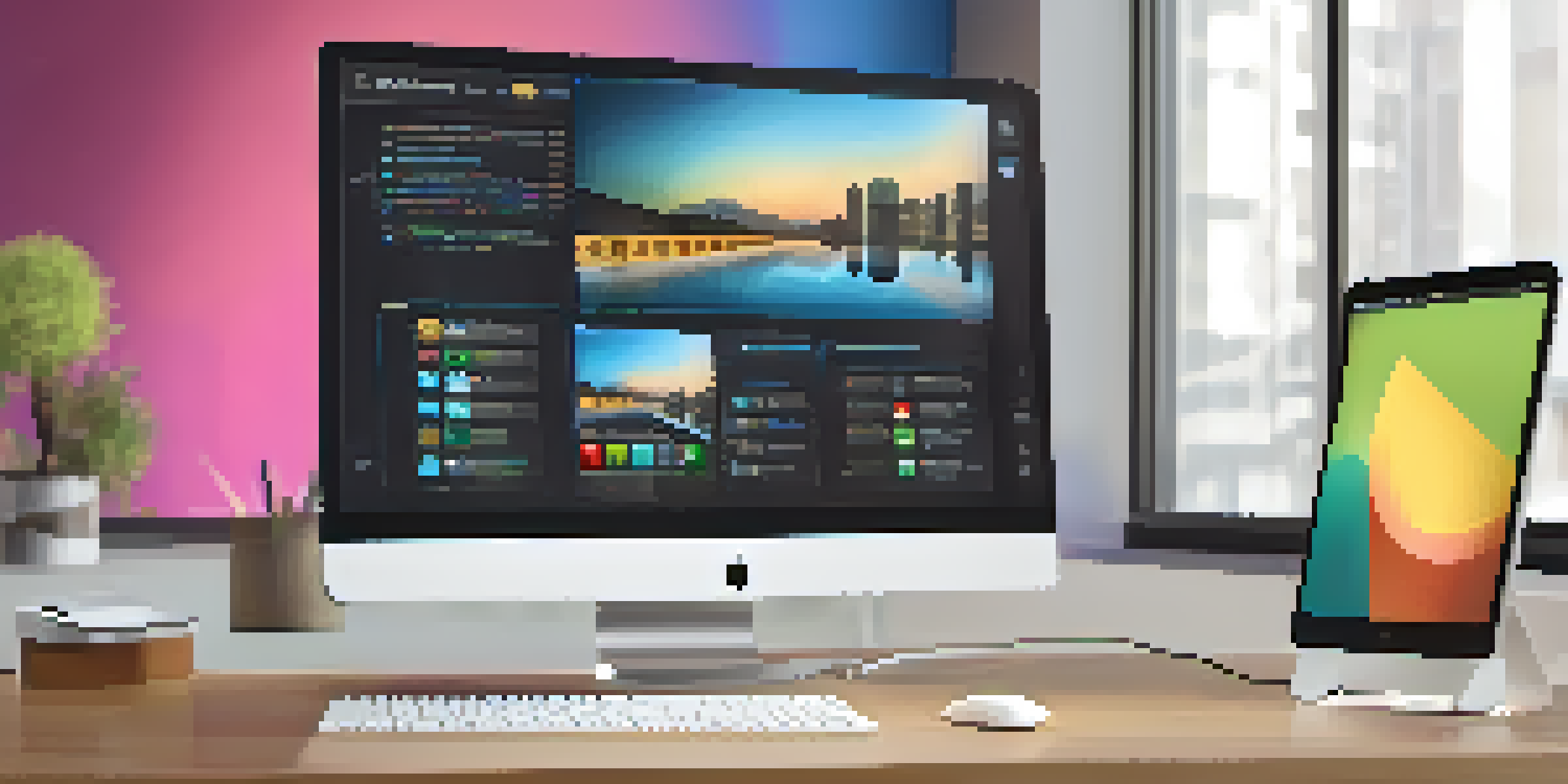Mobile vs Desktop Usability: Key Differences to Consider

Understanding Mobile and Desktop Usability
Usability refers to how easy and satisfying a product is to use, and it varies significantly between mobile and desktop platforms. Mobile usability focuses on touch interactions and smaller screens, while desktop usability often involves keyboard and mouse inputs on larger displays. Understanding these differences is crucial for designing effective user experiences across devices.
Screen Size: The First Major Difference
One of the most noticeable differences between mobile and desktop is screen size. Mobile devices have limited real estate, meaning designers must prioritize essential content and functionality. In contrast, desktops allow for more complex layouts and detailed information, which can enhance usability but may also lead to clutter if not managed wisely.
Mobile vs. Desktop Usability
Usability varies significantly between mobile and desktop platforms, influencing design strategies.
Navigation: Touch vs. Click
Navigation methods differ greatly between mobile and desktop. Mobile users rely on touch gestures, such as swiping or pinching, which can lead to a more intuitive experience if designed well. Desktop users, on the other hand, navigate primarily through clicks and hover actions, enabling more detailed menus but also requiring a more thorough understanding of how to access features.
Content Consumption: A Different Approach
Content consumption habits vary between mobile and desktop users. Mobile users often seek quick, bite-sized information while on the go, making concise content and easy access vital. Desktop users, however, may spend more time engaging with longer articles or in-depth resources, allowing for a more immersive experience that can accommodate detailed information.
Navigation Methods Differ
Mobile relies on touch gestures for navigation, while desktop uses clicks and hover actions, shaping user interactions.
Context of Use: When and Where
The context in which people use mobile and desktop devices greatly influences usability. Mobile devices are often used in various environments, such as while commuting or during meetings, necessitating faster interactions. Conversely, desktops are typically used in more stationary settings, allowing for longer sessions where users can dive deep into content without the same urgency.
Input Methods: Voice and Touch vs. Keyboard and Mouse
Input methods further differentiate mobile from desktop usability. Mobile devices increasingly support voice commands, making tasks hands-free and convenient. Desktop environments, however, rely primarily on keyboard and mouse inputs, which can facilitate complex tasks but may require more precise control from users.
Content Consumption Habits
Mobile users prefer quick, bite-sized information, whereas desktop users engage more deeply with longer content.
Performance and Connectivity Considerations
Performance and connectivity are key factors in usability, particularly for mobile users. Mobile devices often depend on cellular networks, leading to variable performance that can hinder the user experience. In contrast, desktops usually operate on more stable internet connections, allowing for a smoother and more consistent interaction with web applications and services.
Design Principles: Adapting to Each Platform
Design principles must adapt to the specific usability requirements of mobile and desktop formats. Mobile design emphasizes minimalism and quick loading times due to the constraints of smaller screens and variable connectivity. Desktop design can afford to be more expansive and detailed, leveraging the larger display to provide richer content and user interactions.